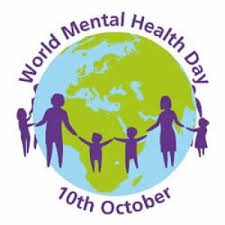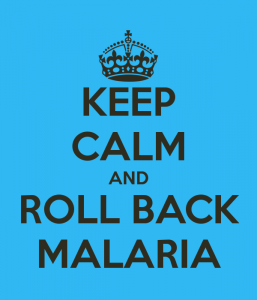As the World Health Organization (WHO) ramps up its fight against antibiotic resistance, a new multi-country survey shows people are confused about this major threat to public health and do not understand how to prevent it from growing.
Antibiotic resistance happens when bacteria change and become resistant to the antibiotics used to treat the infections they cause. Over-use and misuse of antibiotics increase the development of resistant bacteria, and this survey points out some of the practices, gaps in understanding and misconceptions which contribute to this phenomenon. Find out more about the cause of antibiotic resistance at our new series on antibiotic resistance here.
Almost two thirds (64%) of some 10 000 people who were surveyed across 12 countries say they know antibiotic resistance is an issue that could affect them and their families, but how it affects them and what they can do to address it are not well understood. For example, 64% of respondents believe antibiotics can be used to treat colds and flu, despite the fact that antibiotics have no impact on viruses. Close to one third (32%) of people surveyed believe they should stop taking antibiotics when they feel better, rather than completing the prescribed course of treatment.
“The rise of antibiotic resistance is a global health crisis, and governments now recognize it as one of the greatest challenges for public health today. It is reaching dangerously high levels in all parts of the world,” says Dr Margaret Chan, WHO Director-General, in launching the survey findings today. “Antibiotic resistance is compromising our ability to treat infectious diseases and undermining many advances in medicine.”
The survey findings coincide with the launch of a new WHO campaign ‘Antibiotics: Handle with care’—a global initiative to improve understanding of the problem and change the way antibiotics are used.
“The findings of this survey point to the urgent need to improve understanding around antibiotic resistance,” says Dr Keiji Fukuda, Special Representative of the Director-General for Antimicrobial Resistance. “This campaign is just one of the ways we are working with governments, health authorities and other partners to reduce antibiotic resistance. One of the biggest health challenges of the 21st century will require global behaviour change by individuals and societies.”
The multi-country survey included 14 questions on the use of antibiotics, knowledge of antibiotics and of antibiotic resistance, and used a mix of online and face-to-face interviews. It was conducted in 12 countries: Barbados, China, Egypt, India, Indonesia, Mexico, Nigeria, the Russian Federation, Serbia, South Africa, Sudan and Viet Nam. While not claiming to be exhaustive, this and other surveys will help WHO and partners to determine the key gaps in public understanding of this problem and misconceptions about how to use antibiotics to be addressed through the campaign.
Some common misconceptions revealed by the survey include:
Three quarters (76%) of respondents think that antibiotic resistance happens when the body becomes resistant to antibiotics. In fact bacteria—not humans or animals—become resistant to antibiotics and their spread causes hard-to-treat infections.
Two thirds (66%) of respondents believe that individuals are not at risk of a drug-resistant infection if they personally take their antibiotics as prescribed. Nearly half (44%) of people surveyed think antibiotic resistance is only a problem for people who take antibiotics regularly. In fact, anyone, of any age, in any country can get an antibiotic-resistant infection.
More than half (57%) of respondents feel there is not much they can do to stop antibiotic resistance, while nearly two thirds (64%) believe medical experts will solve the problem before it becomes too serious.
Another key finding of the survey was that almost three quarters (73%) of respondents say farmers should give fewer antibiotics to food-producing animals.
To address this growing problem, a global action plan to tackle antimicrobial resistance was endorsed at the World Health Assembly in May 2015. One of the plan’s five objectives is to improve awareness and understanding of antibiotic resistance through effective communication, education and training.
KEY FINDINGS OF THE SURVEY BY COUNTRY
Barbados (507 face-to-face interviews)
Only 35% of respondents say they have taken antibiotics within the past six months—the lowest proportion of any country included in the survey; of those who have taken antibiotics, 91% say they were prescribed or provided by a doctor or nurse.
Fewer than half of respondents (43%) have heard of the term ‘antibiotic resistance’; and fewer than half (46%)—less than any other country in the survey—believe that many infections are becoming increasingly resistant to treatment by antibiotics.
Only 27% of respondents agree with the statements ‘Antibiotic resistance is one of the biggest problems the world faces’ and that ‘Experts will solve the problem’—the lowest proportion of all participating countries for both questions.
China (1,002 online interviews)
57% of respondents report taking antibiotics within the past six months; 74% say they were prescribed or provided by a doctor or nurse; 5% say they purchased them on the internet.
More than half (53%) of respondents wrongly believe that they should stop taking antibiotics when they feel better, rather than taking the full course as directed.
61% of respondents think, incorrectly, that colds and flu can be treated by antibiotics.
Two thirds (67%) of respondents are familiar with the term ‘antibiotic resistance’ and three quarters (75%) say it is ‘one of the biggest problems in the world’.
83% of respondents say that farmers should give fewer antibiotics to animals—the highest proportion of any country in the survey.
Egypt (511 face-to-face interviews)
More than three quarters (76%) of respondents say they have taken antibiotics within the past six months, and 72% say they were prescribed or provided by a doctor or nurse.
55% of respondents incorrectly think that they should stop taking antibiotics when they feel better, rather than taking the full course; and more than three quarters (76%) wrongly believe that antibiotics can be used to treat colds and flu.
Less than one quarter (22%) of respondents have heard of the term ‘antibiotic resistance’—the lowest proportion of any country included in the survey.
India (1,023 online interviews)
More than three quarters (76%) of respondents report having taken antibiotics within the past six months; 90% say they were prescribed or provided by a doctor or nurse.
Three quarters (75%) of respondents think, incorrectly, that colds and flu can be treated with antibiotics; and only 58% know that they should stop taking antibiotics only when they finish the course as directed.
While 75% agree that antibiotic resistance is one of the biggest problems in the world, 72% of respondents believe experts will solve the problem before it becomes too serious.
Indonesia (1,027 online interviews)
Two thirds (66%) of respondents report having taken antibiotics in the past six months; 83% of respondents say they were prescribed or provided by a doctor or nurse.
More than three quarters (76%) of respondents know that they should only stop taking antibiotics when they have taken all of them as directed, but 63% incorrectly think they can be used to treat colds and flu.
84% of respondents are familiar with the term ‘antibiotic resistance’ and two thirds (67%) believe that many infections are becoming increasingly resistant to treatment by antibiotics.
Mexico (1,001 online interviews)
Three quarters (75%) of respondents report having taken antibiotics within the past six months; 92% say they were prescribed by a doctor or nurse; and 97% say they got them from a pharmacy or medical store.
The majority of respondents (83%) accurately identify that bladder/urinary tract infections (UTIs) can be treated with antibiotics, but 61% wrongly believe that colds and flu can be treated with antibiotics.
89% of respondents in Mexico say they have heard of the term ‘antibiotic resistance’ and 84% believe many infections are becoming increasingly resistant to treatment by antibiotics—a higher proportion than any other country included in the survey on both questions.
Nigeria (664 face-to-face interviews)
Almost three quarters (73%) of respondents report taking antibiotics within the past six months; 75% of respondents state they were prescribed or provided by a doctor or nurse; 5% say they bought them from a stall or hawker.
More respondents in Nigeria than any other country included in the survey correctly identify that antibiotics do not work for colds and flu (47%), however 44% of respondents think they do.
Only 38% of respondents have heard of the term ‘antibiotic resistance’—the second lowest proportion of all the countries surveyed.
Russian Federation (1,007 online interviews)
A little more than half of respondents (56%) report having taken antibiotics within the past six months; the same proportion (56%) say their most recent course of antibiotics was prescribed or provided by a doctor or nurse—the lowest proportion of any country included in the survey.
Two thirds (67%) of respondents incorrectly think colds and flu can be treated with antibiotics, and more than one quarter (26%) think they should stop taking antibiotics when they feel better rather than taking the full course as directed.
Awareness of the term ‘antibiotic resistance’ was high among respondents at 82%.
71% think antibiotics are widely used in agriculture in their country and 81% say that farmers should give fewer antibiotics to animals.
Serbia (510 face-to-face interviews)
Fewer than half (48%) of respondents say they have taken antibiotics within the past six months; 81% say they were prescribed or provided by a doctor or nurse.
The majority of respondents (83%) accurately identify that bladder infections/UTIs can be treated with antibiotics, but more than two thirds (68%) wrongly believe that colds and flu can be treated with antibiotics.
Only 60% of respondents in Serbia have heard of the term ‘antibiotic resistance’ and only one third (33%) think it is one of the biggest problems the world faces.
81% of respondents say that farmers should give fewer antibiotics to animals.
South Africa (1,002 online interviews)
65% of respondents say they have taken antibiotics within the past six months; a higher proportion of people than any other country included in the survey (93%) say their last course of antibiotics was prescribed or provided by a doctor or nurse, and 95% say they had advice from a medical professional on how to take them.
87% of respondents know they should only stop taking antibiotics when they finish the course of treatment—a higher proportion than any other country included in the survey.
The same proportion (87%) of respondents—and again more than any other country in the survey—recognize that the statement ‘It’s OK to use antibiotics that were given to a friend of family member, as long as they were used to treat the same illness’ is false. It is a practice which can encourage the development of resistance.
Sudan (518 face-to-face interviews)
More than three quarters (76%) of respondents report having taken antibiotics within the past six months; 91% say they were prescribed or provided by a doctor or nurse.
62% of respondents incorrectly think they should stop taking antibiotics when they feel better—more than any other country included in the survey—and 80% think antibiotics can be used to treat colds and flu. Both of these statements are incorrect. These are practices which encourage the development of antibiotic resistance.
94% of respondents agree that people should use antibiotics only when prescribed, and 79% believe that antibiotic resistance is one of the biggest problems the world faces—the highest percentages on both questions of any of the countries where the survey was undertaken.
Viet Nam (1,000 online interviews)
71% of respondents state they have taken antibiotics within the past six months; three quarters (75%) report they were prescribed or provided by a doctor or nurse.
86% of respondents think that the body becomes resistant to antibiotics (whereas in fact it is bacteria)—a higher proportion than any other country included in the survey.
83% think that many infections are becoming increasingly resistant to antibiotics.
70% of respondents think that antibiotics are widely used in agriculture in their country and almost three quarters (74%) agree that ‘antibiotic resistance is one of the biggest problems the world faces’.




